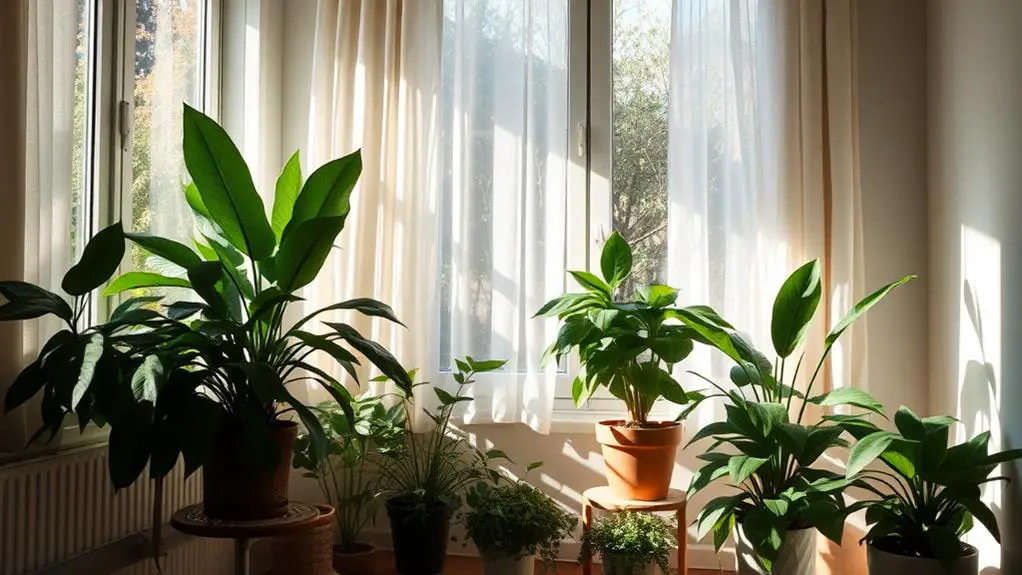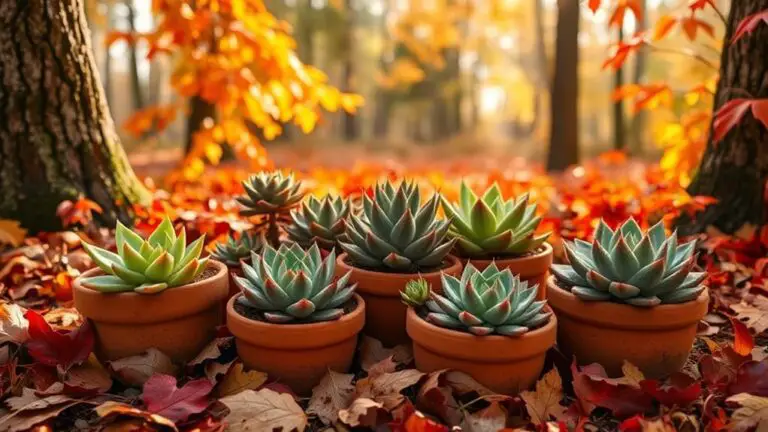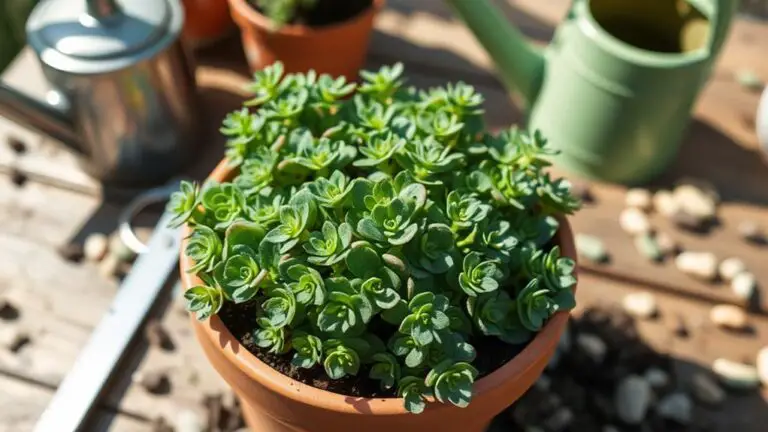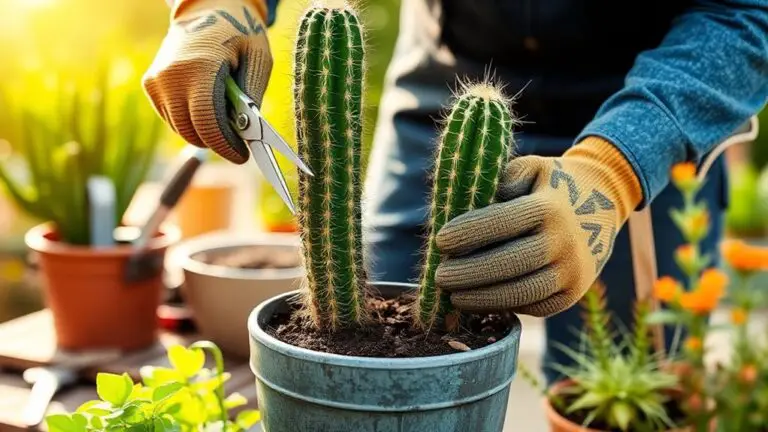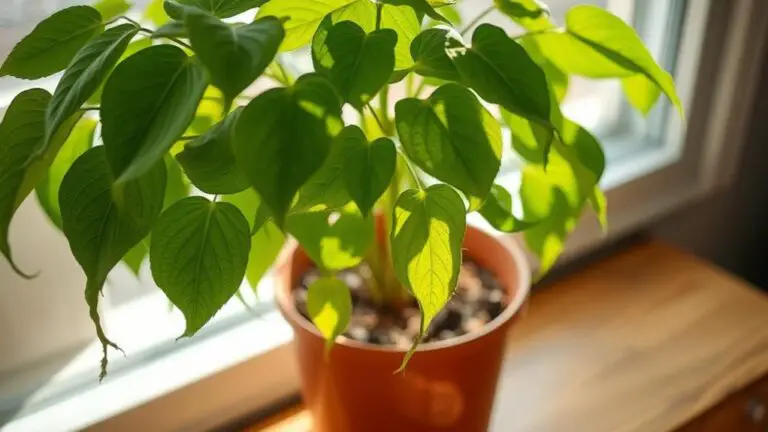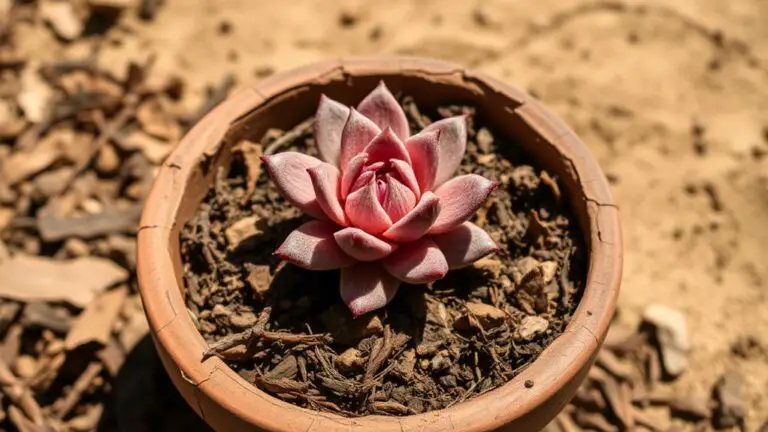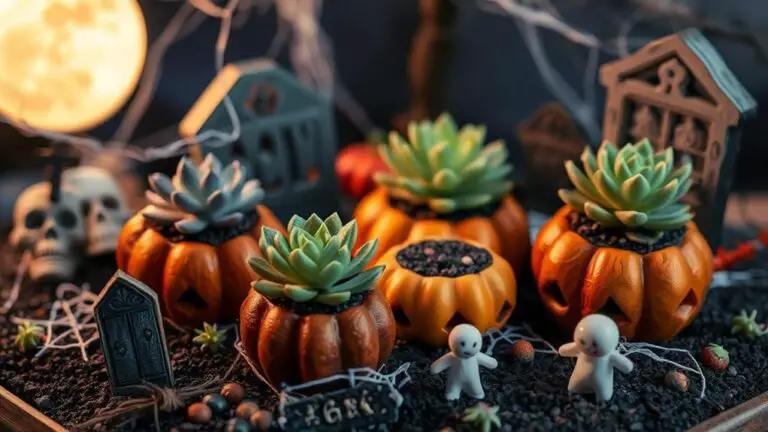7 Tips for Finding the Right Light Levels for Your Houseplants
Finding the right light levels for your houseplants can be challenging, but it's vital for their health and growth. Start by identifying the direction your windows face, since this impacts the intensity of light your plants receive. Don't forget to take into account external obstructions like trees or buildings that might block sunlight. Measuring light levels with a light meter or an app at midday will give you the most accurate readings. Choosing plants that match your home's light conditions and enhancing light with LED grow lights can make a big difference. But what should you do if your plants still show signs of light stress?
Identify Window Directions
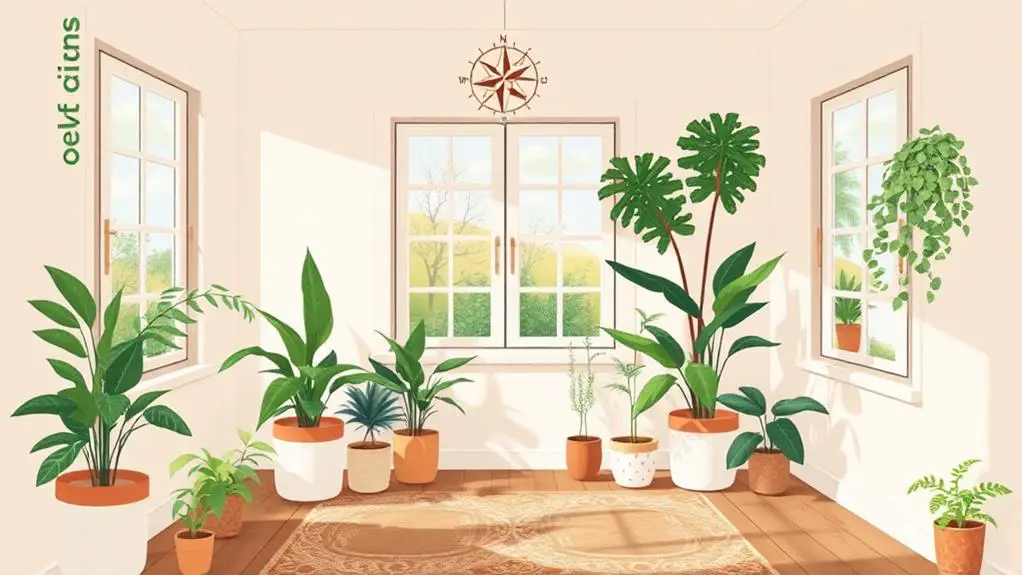
Identifying the direction of your windows is essential for determining the right light levels for your houseplants. Using a compass or smartphone app, you can easily find out which way your windows face.
North-facing windows provide low to moderate indirect light, perfect for low-light plants. South-facing windows get the brightest indirect light and full sun in the afternoon, making them ideal for high-light plants like succulents. East-facing windows give medium to bright indirect light, great for plants like orchids that love morning sun.
Knowing your window directions helps you place plants where they'll thrive. Understanding light levels guarantees your plants get the right amount of indirect light, making your home a healthy haven for your green friends.
Consider External Obstructions
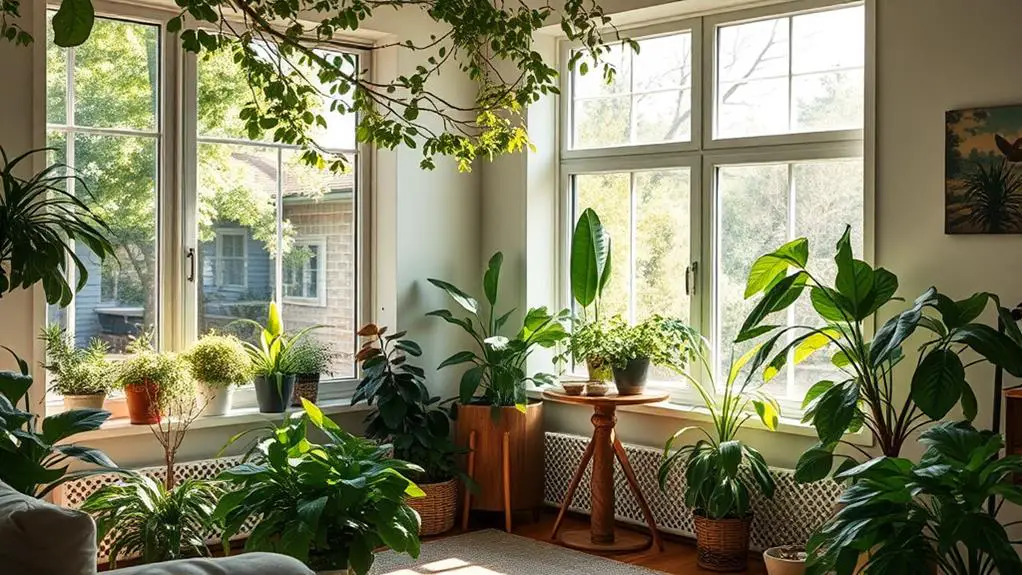
When considering external obstructions, you must evaluate how nearby buildings, trees, and furniture block sunlight and reduce the light quality available to your houseplants.
These obstructions can greatly affect the amount of light that reaches your indoor plants, so plant placement is essential. Here are some things to look out for:
- Nearby buildings: Tall structures can cast shadows, limiting sunlight through your windows.
- Trees: Overhanging branches can block light, especially during certain times of the day.
- Furniture: Large pieces near windows can obstruct light, reducing the effectiveness of natural light for your houseplants.
Move light-sensitive plants closer to windows to guarantee they receive adequate sunlight.
Assess Window Size
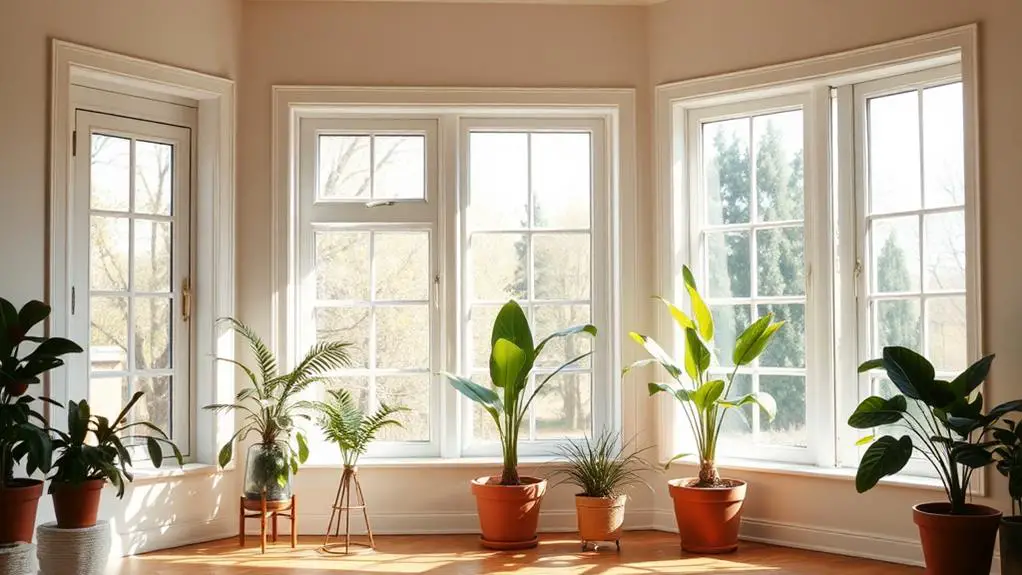
While evaluating the light needs of your houseplants, don't overlook the importance of window size.
Larger windows let in more light, which benefits light-sensitive plants. Smaller windows, on the other hand, might limit light intensity to 100-200 foot-candles (FC).
By placing plants near larger windows, especially those facing south or west, you can enhance their growth with higher light levels.
If you have small windows, position low-light tolerant plants 2-3 feet away to guarantee they still receive adequate indirect sunlight.
Analyzing both window size and window orientation will help you determine the best plant placement.
This approach guarantees your plants get ideal light exposure, promoting healthy growth and vibrant foliage.
Measure Light Levels
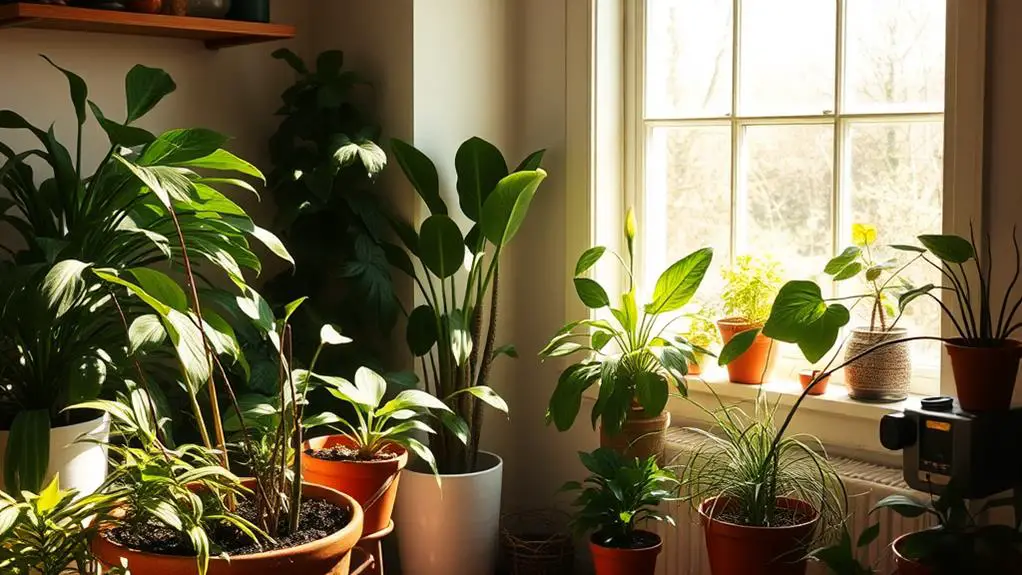
To measure light levels for your houseplants, you can use a light meter, which gives specific readings in foot-candles for accurate assessment.
If you don't have a light meter, smartphone apps can also help, though they mightn't be as precise.
Aim for midday measurements to get the most accurate readings, considering seasonal changes and cloud cover.
Using Light Meters
Understanding how to use light meters can greatly improve your ability to care for houseplants. Light meters measure light intensity in foot-candles (FC), allowing you to know the exact amount of light your plants receive. This is vital for ideal plant growth.
- Low light: 50-150 FC, great for ZZ plants and snake plants.
- Medium light: 200-400 FC, perfect for Dracaena and Spider Plants.
- Indirect sunlight: Necessary for many houseplants to thrive.
To use a light meter, place it near your plant at midday. This helps guarantee they're getting enough light.
Regularly measuring light intensity can guide you in adjusting their placement, making sure your plants stay healthy. By understanding these levels, you'll support your plants in thriving conditions.
Smartphone Light Apps
Exploring light meters has shown how precise measurements can enhance your plant care routine. Did you know that a smartphone app can measure light intensity just like a traditional light meter? These apps measure light in foot-candles (FC) and help you understand your plants' needs. For example, a reading of 100 FC indicates low light, which won't support a Dracaena that needs at least 200 FC.
| Feature | Description |
|---|---|
| Real-time measurement | Measures light intensity instantly |
| Data logging | Tracks light changes over time |
| Accuracy | Position sensor towards the light |
| Best time to measure | Around midday for consistent readings |
Regularly using a smartphone app guarantees you track seasonal light changes, promoting healthier plant growth.
Enhance Light Conditions
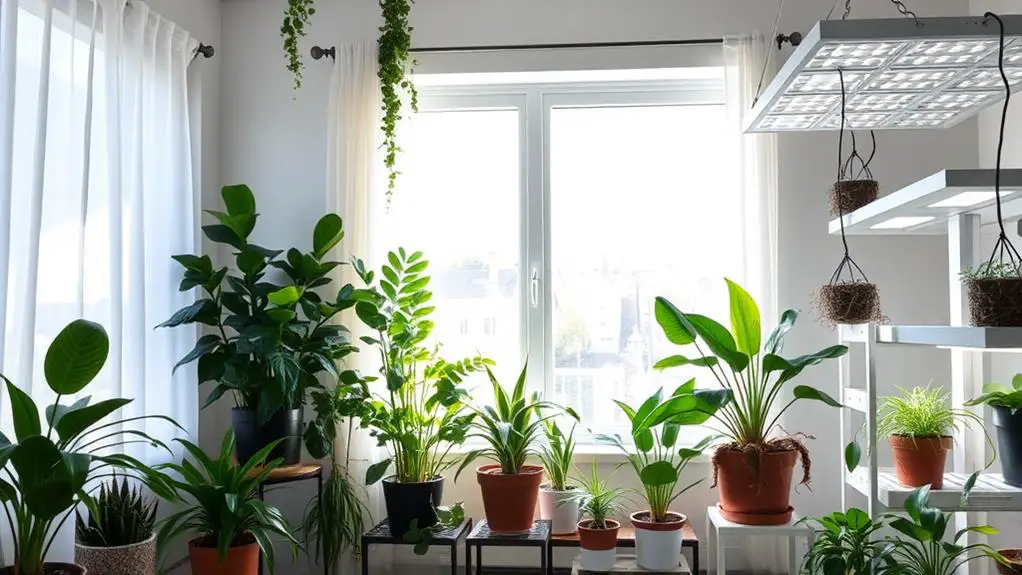
To enhance light conditions for your houseplants, think about using LED grow lights to supplement natural light, especially in low-light areas.
Place these lights 12-24 inches above your plants for the best coverage and avoid overheating.
Additionally, using timers and reflective surfaces can help mimic natural light patterns and boost overall brightness for healthier growth.
Supplemental Grow Lights
Supplemental grow lights are a game-changer for anyone trying to grow plants in low-light environments like basements or rooms with limited natural light. They guarantee your plants get the essential light spectrum needed for photosynthesis.
LED grow lights are a top choice because they're energy-efficient and long-lasting. You can adjust them to meet your plant needs.
Consider using full-spectrum grow lights for the best results, as they provide both blue and red light necessary for different growth stages.
To keep things simple:
- Set light schedules: Aim for 12-16 hours of light daily.
- Choose LEDs: They save energy and last longer.
- Understand the light spectrum: Blue light for growth, red for flowering.
Timers can help manage consistent light schedules, guaranteeing healthy plants.
Light Placement Strategies
Positioning your plants correctly can make a world of difference in their health and growth. Effective light placement strategies are essential. For bright indirect light, place plants near windows but use sheer curtains for filtered light. Keep light-sensitive plants 2-3 feet from windows to avoid light burn. Use reflective surfaces like white walls or mirrors to enhance light distribution. Regularly rotate your plants for even growth.
Consider artificial lights and place your plants 12-24 inches below them for ideal coverage. Here's a quick reference:
| Light Type | Placement Strategy |
|---|---|
| Bright Indirect | Near windows with sheer curtains |
| Medium Light | 2-3 feet from windows |
| Indirect Sunlight | Use reflective surfaces |
| Filtered Light | Sheer curtains |
| Artificial Lights | 12-24 inches below light source |
These strategies will help your plants thrive!
Enhancing Natural Light
Enhancing natural light for your houseplants can markedly boost their growth and overall health.
If your home doesn't get enough sunlight, especially in low-light areas or during winter, think about using grow lights. Full-spectrum LED grow lights mimic natural sunlight and help your plants thrive. Position these lights 12-24 inches above your plants and adjust them as your plants grow.
You can also use reflective surfaces to increase the light levels your plants can withstand. Mirrors or shiny surfaces can bounce light to your medium-light houseplants, giving them the indirect light they need.
- Use grow lights to supplement natural light.
- Position lights correctly for ideal coverage.
- Incorporate reflective surfaces to enhance light intensity and availability.
Choose Ideal Plant Locations
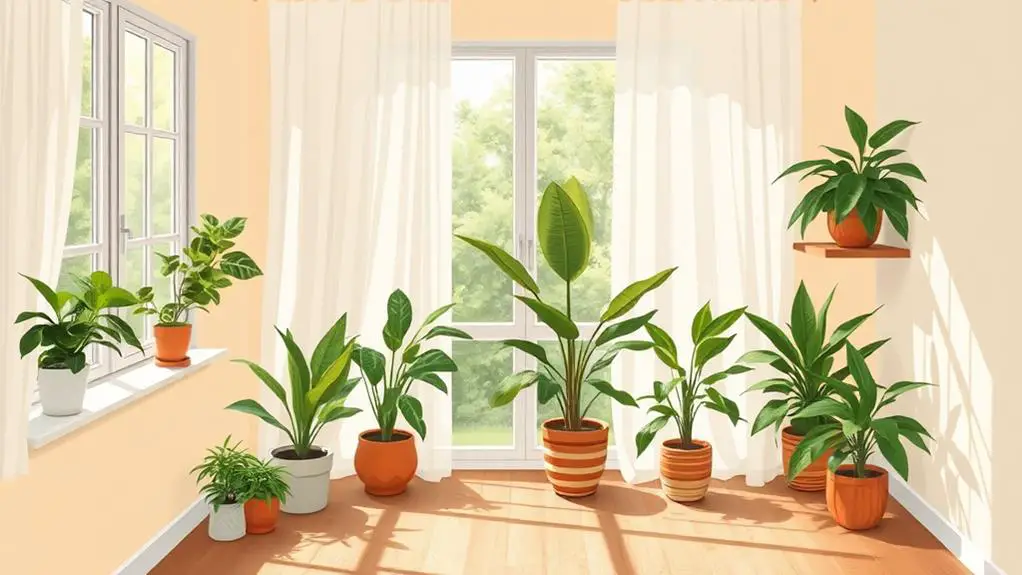
When choosing the ideal locations for your houseplants, start by evaluating the orientation and size of your windows. South-facing windows provide the brightest amount of sunlight, making them perfect for indoor plants that need lots of light.
If you have light-sensitive species, position them 2-3 feet away from the window to avoid light burn. North-facing windows are better for low-light tolerant plants.
Larger windows allow more light to enter, boosting growth potential for plants nearby. Be mindful of external obstructions like buildings or trees that may block sunlight.
Regularly monitor light intensity using a light meter to guarantee your plants get the right foot-candle readings.
Troubleshoot Lighting Issues
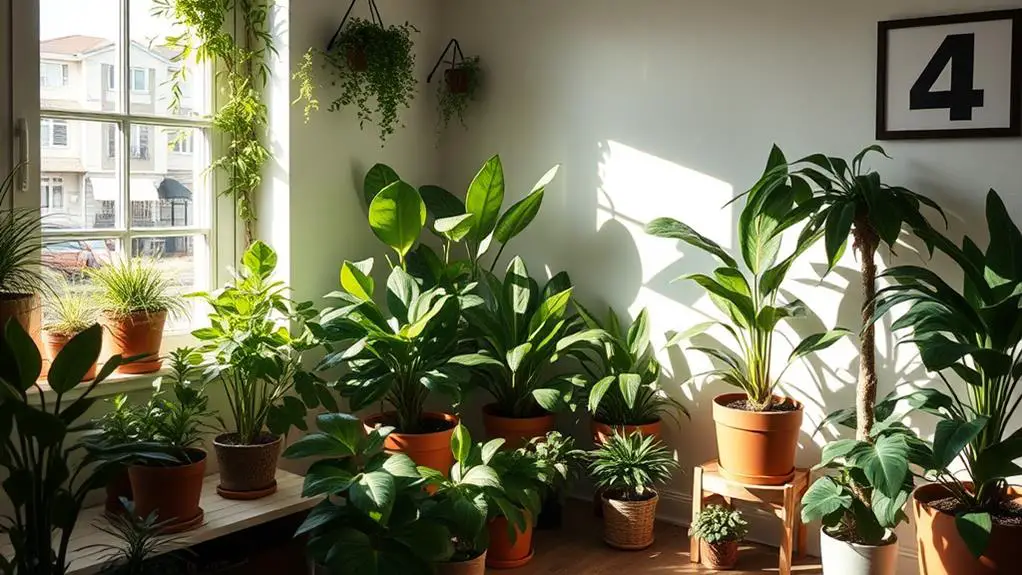
Dealing with lighting issues in your houseplants can be challenging, but understanding common symptoms helps you tackle problems effectively.
If you notice your plant's leaves turning yellow, it might be getting too much light, leading to light burn and stress.
Stunted growth often means the plant isn't receiving enough light, so try moving it closer to a light source.
Sudden leaf drop can happen when a plant's light levels change abruptly, so adjust lighting conditions gradually.
- Yellowing leaves: Too much light, causing leaf burn.
- Stunted growth: Not enough light, move closer to light source.
- Leaf drop: Sudden change in lighting conditions.
Regularly assess plant health and make small adjustments. This will help keep your plants thriving and maintain ideal growth.
Frequently Asked Questions
How Do You Determine the Light Level for Houseplants?
You determine the light level for houseplants by checking window orientation, using a light meter, and observing plant responses. Don't forget to think about external obstructions and seasonal changes when evaluating and adjusting light levels.
How Do I Choose the Best Indoor Lighting for My Plants?
Assess your window orientation and measure light intensity with a light meter or app. Choose plants based on light needs: low-light for north-facing windows, high-light for south-facing. Use reflective surfaces to enhance light in dim areas.
How Do I Make Sure My Indoor Plants Get Enough Light?
Check your windows' orientation and measure light intensity with a light meter or app. Position plants accordingly and consider LED grow lights if necessary. Regularly monitor and adjust plant placements for seasonal light changes to guarantee adequate light.
Is Light Through a Window Considered Direct Sunlight?
Yes, light through a window is considered direct sunlight if it comes in unobstructed. However, it's crucial to manage it, as it can be intense and may cause sunburn on sensitive plants. Use curtains to diffuse it.
Conclusion
You've got this! Finding the right light levels for your houseplants isn't as tricky as it seems. By identifying your window directions, considering any outside obstructions, and measuring light levels, you'll set your plants up for success. Don't forget to enhance conditions with grow lights if needed and rotate your plants regularly. Keep an eye on their health and make adjustments when necessary. With these tips, your plants will thrive and bring joy to your home!

